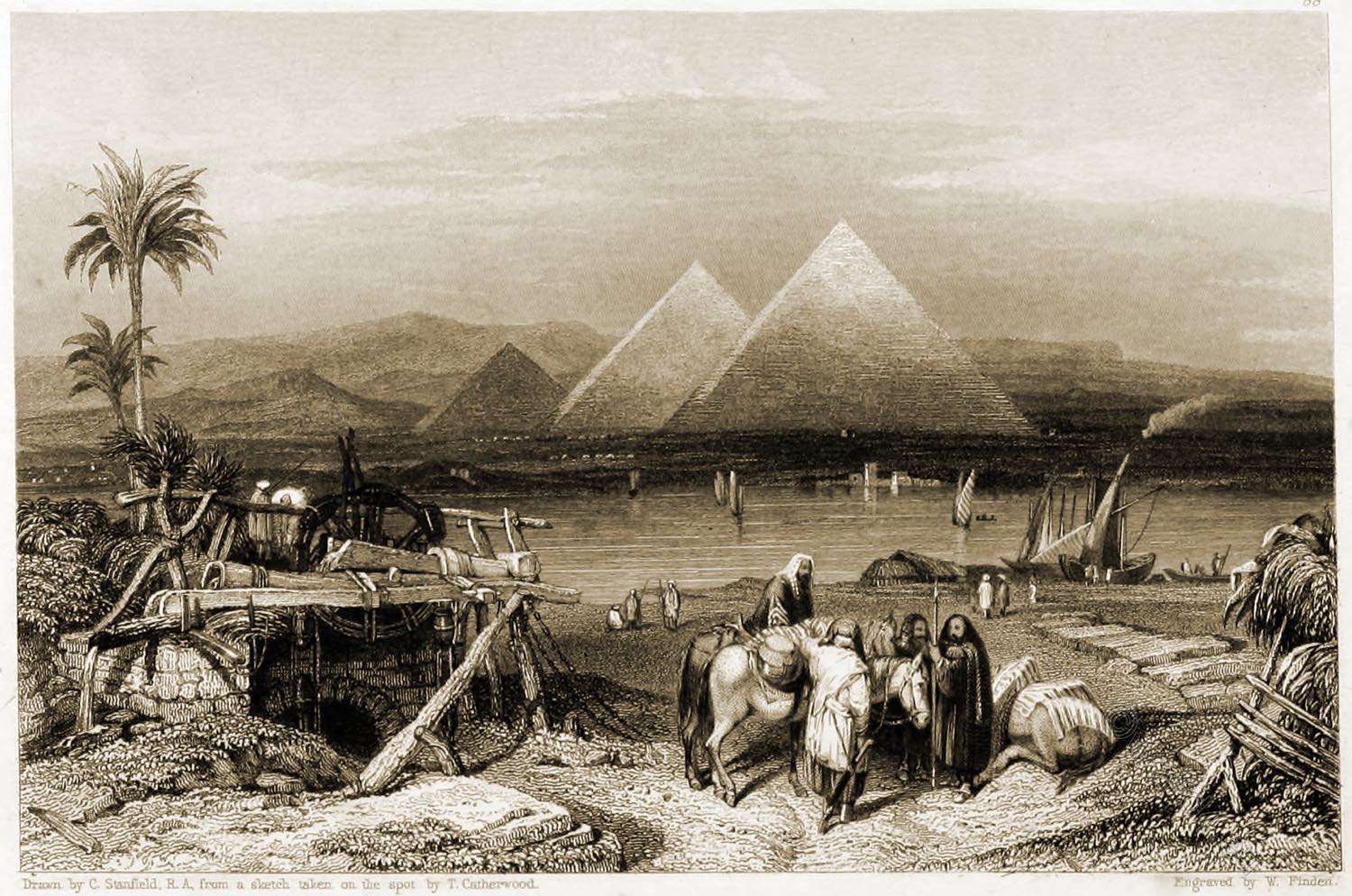The Cataract of Shih Tan, Yangtze River.
The western parts of Jiangnan, bordering upon the inland province of Hou-Quang, are mountainous, arid, and sterile. Fruitful in rivers, their waters are with difficulty approached, not only from the ruggedness of their rocky beds, but the great depths also to which these have been worn by the eternal action of the falling volume.
Granite is the predominating rock in the most elevated places, but a species of slate-stone, hard, and of an irregular fracture, forms the channels of the mountain-torrents, assuming, in every instance, forms the most bold and picturesque. At an elevation of some 1,500 feet above the level of the sea, the Tay-ho, a chief tributary of the lower Yangtze River, receiving the drainage of many hundreds of square miles, in a country whose climate is particularly humid, its whole accumulation falls over the brow of Shih Tan into a spacious basin of slate-rock, presenting, in the rainy season, an object of beauty, majesty, and interest.
Superstition, the companion and the badge of ignorance, has appropriated these sublime localities to the occupation of sorcerers, witches, magicians, evil demons, or, at all events, to beings supposed to be possessed of supernatural powers, which they exhibit by the use of spells, cabalistic terms, charms, characters, images, amulets, ligatures, philters, and incantations.
At the foot of the mountain-pass, which is much frequented by travellers between the two adjacent provinces, a toll-house is erected, where each borderer is required to drop his contribution to the spirit of the hills and the torrents, the principal produce of which is believed to be the performance of certain propitiatory rites, by the resident bonzes, for his safe passage, especially by the seven cataracts of Shib-tan. As the ascent is aided by stairs cut in the compact schistus, a firm step is all that is required to accomplish the journey; but, where real dangers are absent, credulity supplies those that are imaginary. In the cooler seasons, numbers of borderers cross these hills, and brave the terrors of these haunted glens; while they carry, suspended from their shoulders, various articles of produce and barter, from their respective homes. More wealthy persons are conveyed in a litter, or a comfortable sedan-chair, to the highest pinnacles and up the steepest ascents, whether for the purposes of business, or from superstitious motives.
In this picturesque locality, and amidst the shattered crags that hang over the seven cataracts, grows the Tong Choo, and also a species of Rhus, from the seeds of which an oil is expressed, used in the composition of a valuable varnish. Here also the tea-plant grows wild; and pines, both dwarf and lofty, adorn the cliffs on every side. The transfer of rice, the preparation of oil, or of varnish, the felling of pine-timber, constitute so many sources of occupation to the mountaineers; but they have another origin of trade, little less profitable, in the existence of a charmed grotto immediately above the greatest of the cascades.
Ta-Vang, a Chinese saint of royal birth, commiserating the lot of lunatics, devoted himself to the service of Fo, on condition that that most absurdly- conceived power would promise to spare men’s intellects in future. Retiring to the seven falls, sometimes called the seven cups of Shih-tan, he there passed his declining years in solitude and supplication. His grotto or couch, in the dark grey rock, is now visited by pilgrims, and numbers of lunatics, brought hither by their relatives, are laid on Ta-Vang’s bed, which they believe to be instrumental in restoring the phrenzied to their senses.
The deliberate reader may doubt, perhaps, whether the afflicted patient or his credulous attendant be the more insane; but, whichever way he decides, let him not ascribe to the ignorant Chinaman alone all such absurd practices. In a closet at the church of Poictiers, in France, the bed of St. Hilary is preserved, and here lunatics are constantly laid to sleep, in the expectation that its miraculous efficacy will restore them to perfect sanity.
Source: China, in a series of views, displaying the scenery, architecture, and social habits, of that ancient empire. Drawn, from original and authentic sketches, by Thomas Allom. With historical and descriptive notices by the Rev. G. N. Wright.







